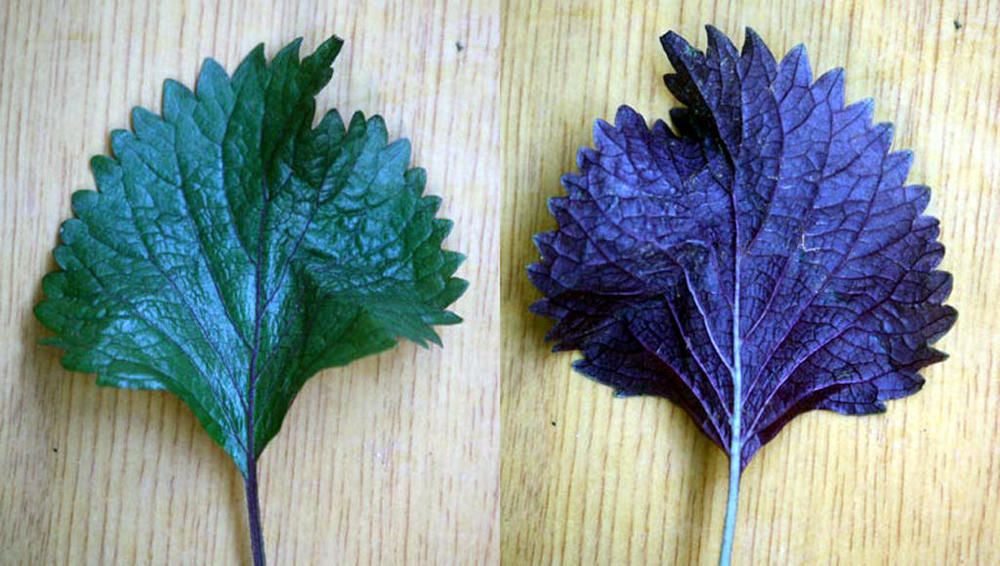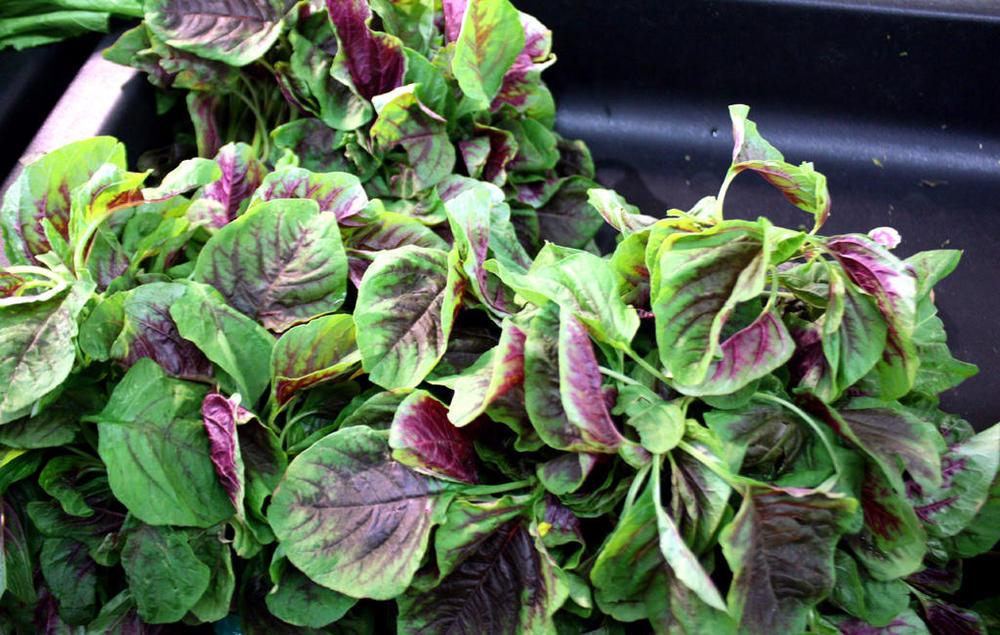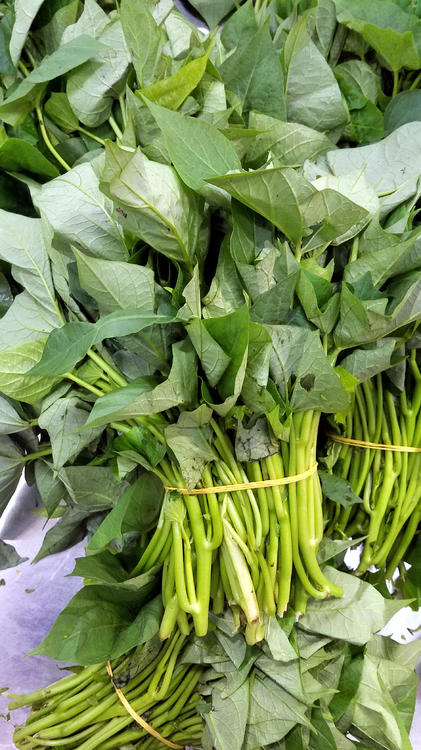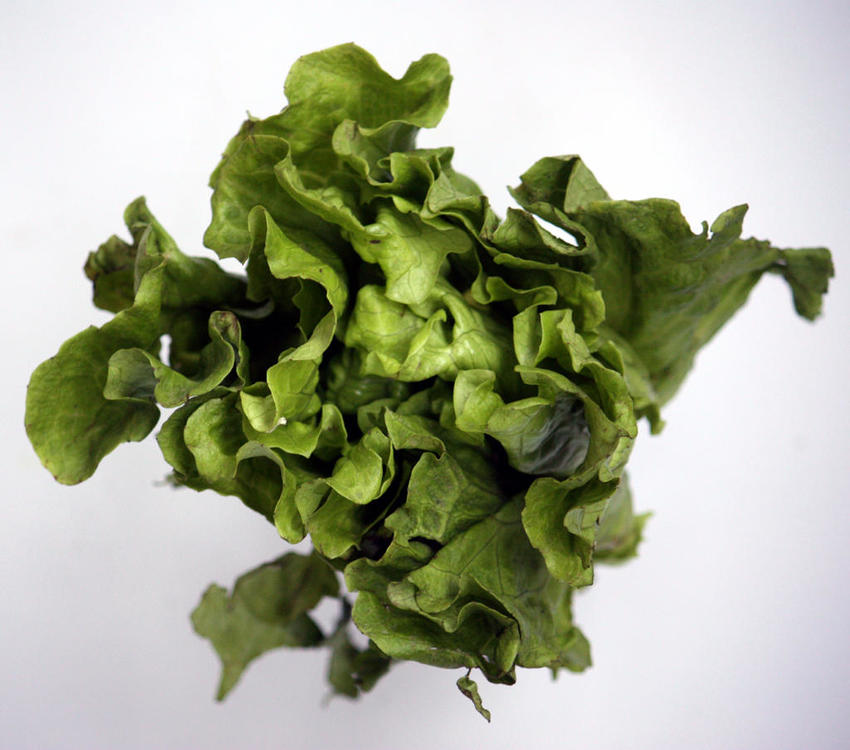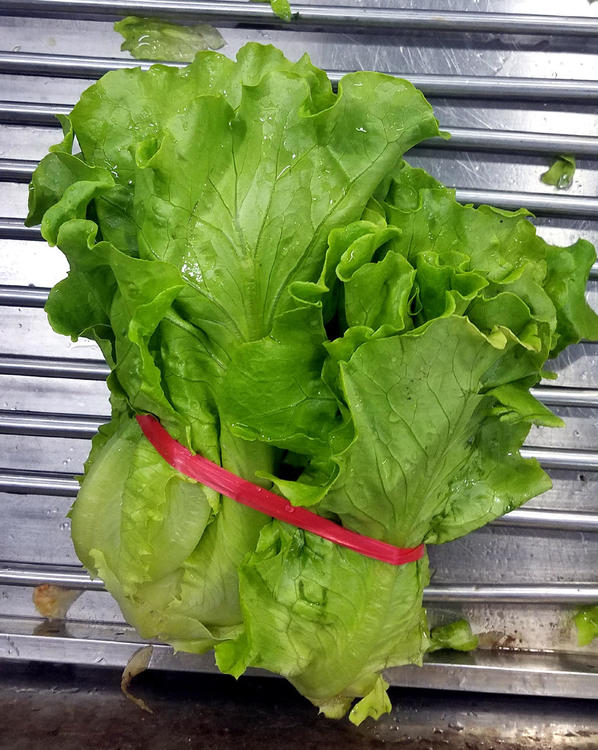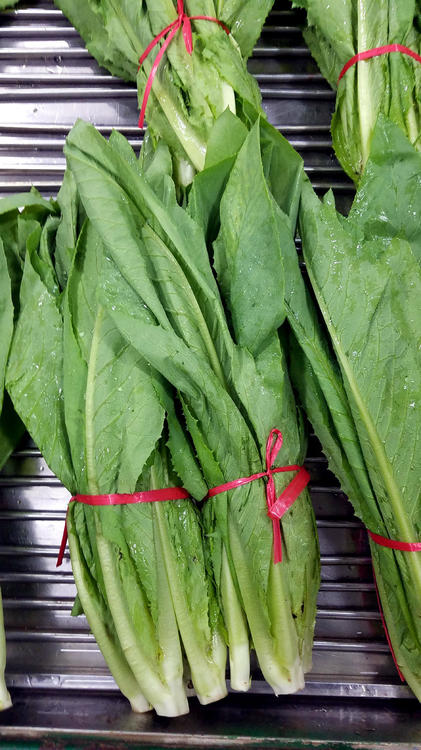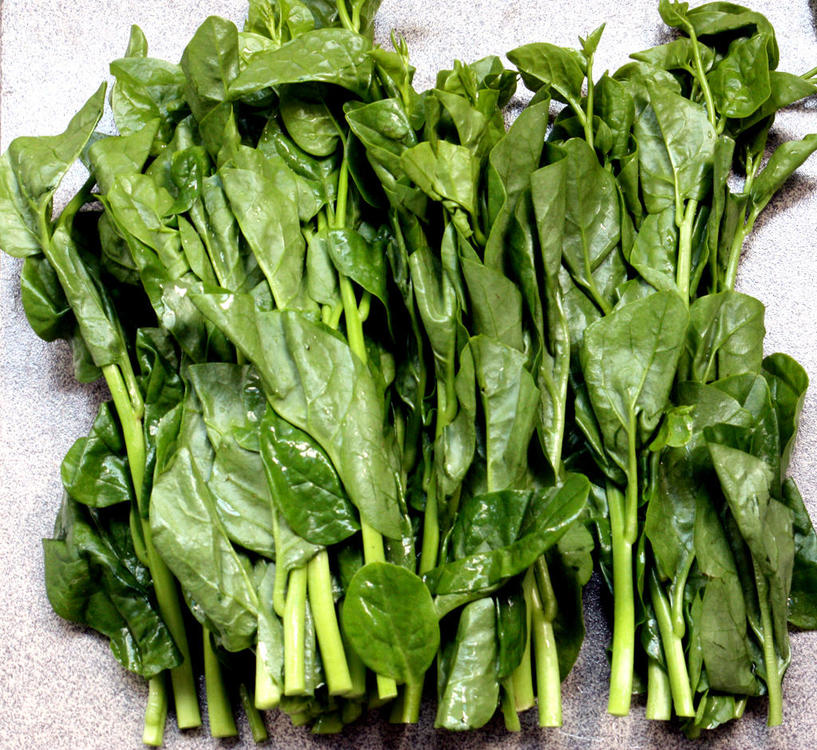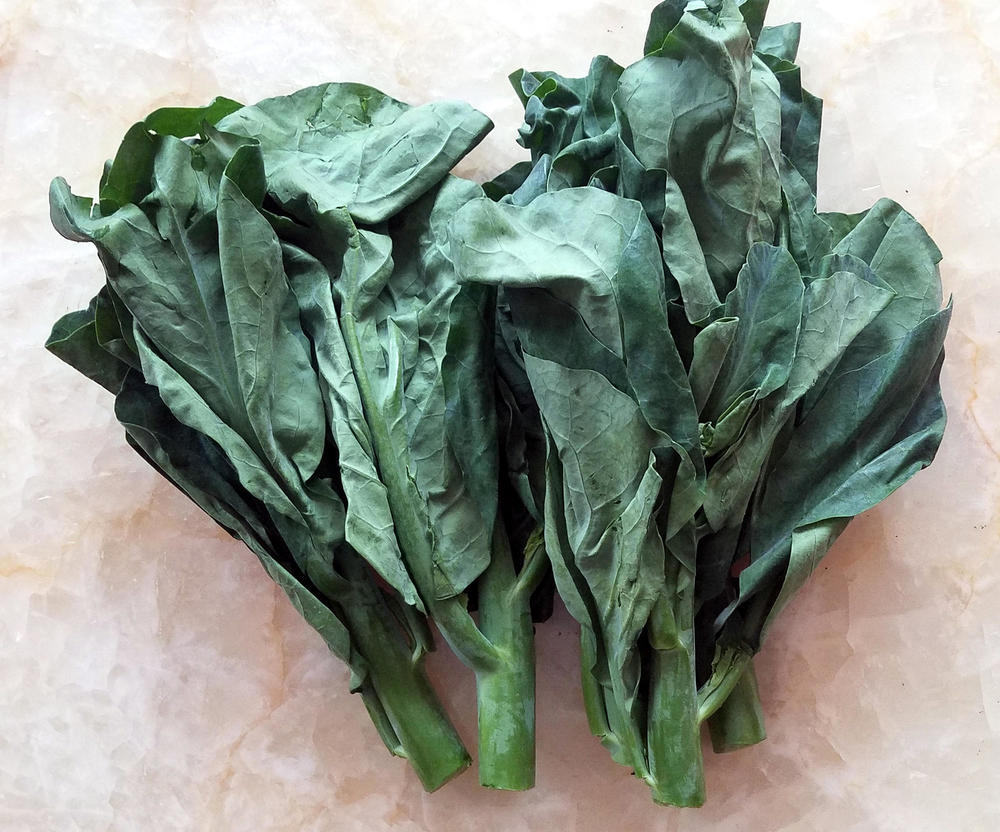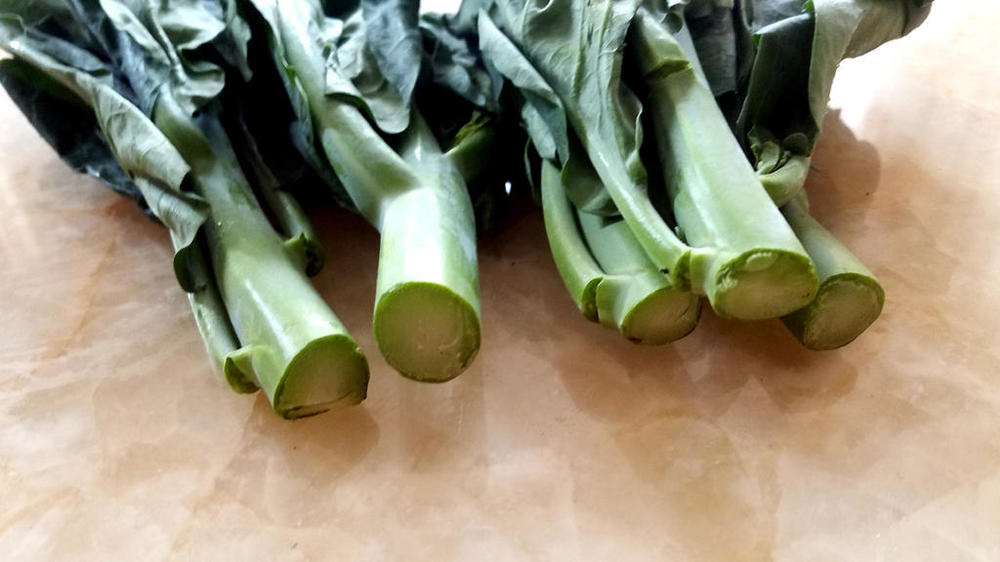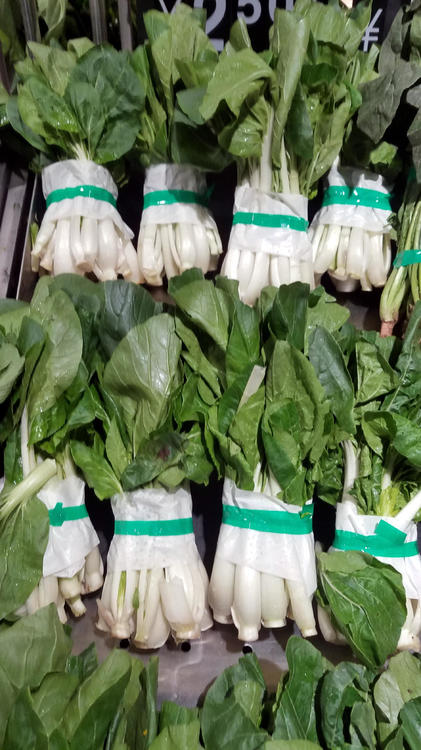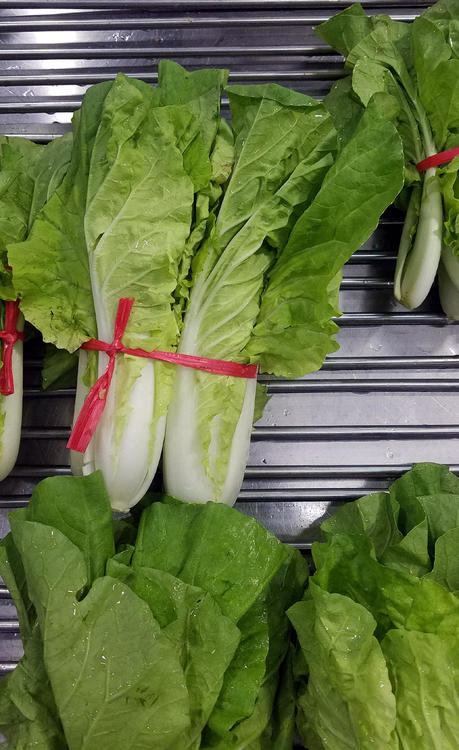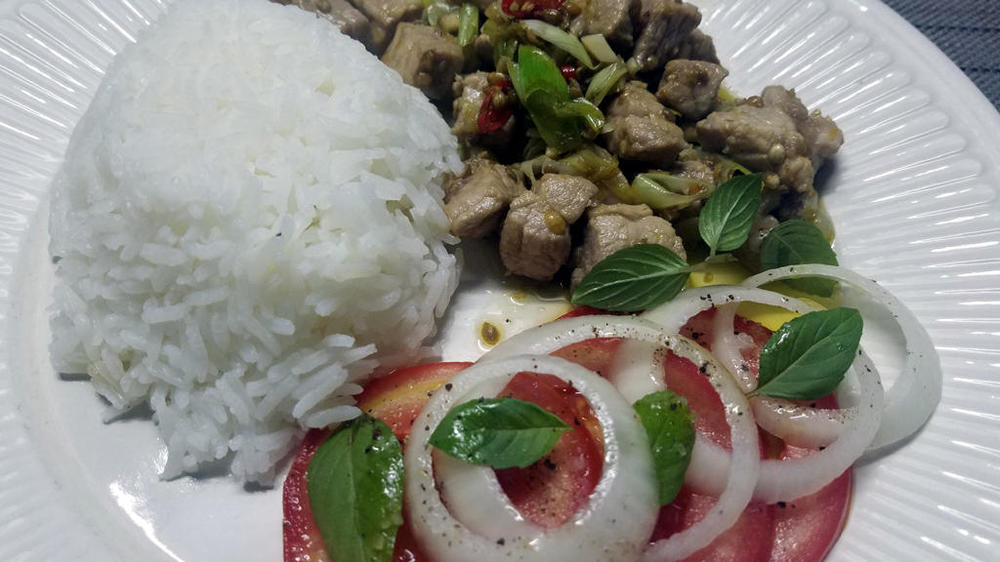-
Posts
15,140 -
Joined
-
Last visited
Content Type
Profiles
Forums
Store
Help Articles
Everything posted by liuzhou
-
Another not entirely green "green" is Perilla frutescens var. crispa. Purple Perilla, 紫苏/紫蘇 (Mand: zǐ sū; Cant: zi2 sou1*) is a plant in the mint family used both as a vegetable and occasionally as a herb. It is a popular choice throughout South-east Asia and Japan as well as here in China. Perilla comes in green varieties, known in Japan as shiso ( シソ ), but the popular choice round here is the ‘purple’ variety. In fact it’s not entirely purple. As you can see from the picture below which is of one leaf, one side is green and the other purple. This trait and the leaves’ sawtooth edges help to distinguish it from other purple vegetable which are superficially similar. Amaranth leaves, for example are either entirely green or entirely purple and lack the serrated edge. Perilla is generally simply stir-fried as a leaf vegetable with garlic and/or ginger and served as a dish to accompany others. It is important to know that cooking the plant causes the red/purple colouring to leech out. In many people’s eyes this makes the vegetable undesirable if mixed with other ingredients. Of course, perilla is also used in TCM (traditional Chinese medicine). What isn’t? They reckon it boosts the immune system and alleviates the common cold. Probably does a better job in the latter case than the useless injections everyone insists on having. Antibiotics are ineffective against viruses, but they won’t believe me. They also think colds are caused by cold. Nonsense. They forget that every time they get a summer cold. But, I digress. * Beware. The Cantonese name zi2 sou1 is also used to mean basil. More on Monday. I need a rest.
-
Tired at looking at all of this greenery? Here are a couple of only semi-green greens. First up is amaranth. There are 70 different species, but the ones we get most often are Amaranthus dubius. Quite distinctively red and green, this is a plant which grows worldwide and which is usually regarded as a weed, but in China is a well-liked foodstuff. And why not? In Chinese it is usually 苋菜/莧菜 (Mand: xiàn cài; Cant: jin6 coi3), but is known in the local dialect as 汉菜/漢菜 (Mand: hàn cài; Cant: hon3 coi3) , which kind of means ‘Chinese vegetable’. In English and English renditions of Cantonese it is red spinach, Chinese spinach,, spleen amaranth, hon-toi-moi, yin choy, or hsien tsai. These leaves can leech red juices which colour everything they meet. For that reason it tends to be less frequently used in soups etc, but is simply stir fried. The taste is reminiscent of spinach (hence one of its English names). It is also packed with minerals and vitamins and general good things.
-
They taste green and almost spinach-like. Perhaps a bit more delicate. If you like any greens you'll like them.
-
Next, another of my favourites. Ipomoea batatas - sweet potato shoots. Although their origin is in the Americas, the sweet potato was introduced to China in the late 16th century and rapidly became popular. It didn't take the Chinese long to figure out that the shoots are even better than the root. In fact, I don't really like the potatoes, but the shoots are great. We only get the red skinned variety, so the Chinese name is 红薯苗/紅薯苗 Mand: hóng shǔ miáo; Cant: hung4 syu4 miu4), meaning 'red potato shoot'. Again, usually stir fried with garlic and maybe chilli or used in hot pots. I'll say more about the potatoes when I get to root vegetables, probably around 2053.
-
Still on lettuce, I should mention that we do get what I, and probably you, think of as 'regular' lettuce. Sadly, only one type. Romaine or Cos lettuce. Lactuca sativa L. var. longifolia. I do like the Chinese name. Just as 'whisky', derived from the Gaelic 'uisgebeatha' literally meaning ‘water of life’, the Chinese name for this lettuce is 生菜 (Mand: shēng cài; Cant: saang1 coi3), meaning ''vegetable of life' (literally 'life vegetable'). I'm not sure how long you could live on just whisky and lettuce, though. Like most of the preceding veg, this is usually served wilted with garlic and oyster sauce, but rarely raw. It is also used in noodle or wonton soups.
-
Mine has been minced, pickled and and deep fried.
-
So, far I've shown 17 vegetables. Only 100 more to catch up with my supermarket stocks, then they will find something else as the seasons change! Speaking of lettuce varieties (last post), here is another. Lactuca sativa var. asparagina Although it doesn’t look like it, this is a member of the lettuce family. I know it as celtuce, but it's also known as known in English as stem lettuce, celery lettuce, asparagus lettuce, sword lettuce, A-choy, or Chinese lettuce. In Chinese it is 莴笋/萵筍 (Mand: wō sǔn; Cant: wo1 seon2) or 莴苣/萵苣 (Mand: wō jù; Cant: wo1 geoi6). Those in the second picture are about 40 cm (15.7 inches) long and have a maximum diameter of 5 cm (2 inches). The stems are peeled, sliced and used in various stir fries. The taste is somewhere between lettuce and celery, hence the name. The texture is more like the latter. The leafy tops are also sold separately as 油麦菜/油麥菜 (Mand: yóu mài cài; Cant: jau4 mak6 coi3). The stems are also dried and sold as 贡菜/貢菜 (Mand: gòng cài; Cant: gung3 coi3), literally 'tribute vegetable'.
-
苦麻菜 (Mand: kǔ má cài; Cant: fu2 maa4 coi2) Bitter Hemp This, I'm told, a variety of lettuce, grown mainly in Yunnan province. It grows to around 50cm long (The ones in the image were around 40cm). It was originally used as animal fodder, but the locals developed a taste for its bitter flavour and from there it spread. The leaves are briefly blanched in boiling water, then refreshed in cold water to remove some of the bitterness, then stir fried or added to soups etc. Although it can be more bitter when older, younger leaves, while bitter are not unpleasantly so. This is one I like.
-
I don't know if it tastes better but she does say near the end that "This hand torn purple cabbage with scrambled egg is ready." There are a number of "hand-torn" dishes in Chinese cuisine, so maybe it's just traditional. Or maybe she just doesn't have a knife!
-
Not laugh out loud funny, but it amused me for a second or three. Despite being a Chaplin fan, I didn't buy it. a) It was about 4 times the price of all the other peelers. b) I really don't need yet another peeler.
-
@Beebs I've found this video of a Chinese recipe for stuffed cabbage using red cabbage leaves. It's in Chinese but should be fairly easy to follow visually. The ingredients of the stuffing mix, in order, are glutinous rice, (cooked) pork, shiitake mushrooms, salt, white pepper, soy sauce and oyster sauce. As is usual here, no quantities are given, so you just have to use your own judgement. And on YouTube, there is this: Again, I think easy to follow without knowing Chinese. There are more at https://www.youtube.com/results?search_query=紫包菜
-
I don't know. I've never knowingly had it. Maybe I have, but most of these greens look the same after being cooked. I'll get to gai choy soon. It is one of the two most common greens round here.
-
@Beebs My exhaustive poll among China's 1.4 billion population has elicited five replies so far from friends whose culinary knowledge I trust. The consensus is that red cabbage is mainly pickled much as it is in Europe and, I believe, North America. Some said they only use it in western style salads, but they are very unusual - both my friends and the salads. Chinese people rarely do raw. If anyone comes up with a specifically Chinese usage, I'll let you know.
-
Yes. I see what you mean. I need to find a botanist.
-
As it has been mentioned, I'm also bringing this one forward. Basella alba 木耳菜 (Mand: mù ěr cài; Cant: muk6 ji5 coi2; literally 'wood ear vegetable') seems to be most commonly called Malibar spinach in English. Not closely related to true spinach, it has many names in both Chinese and English. In English - vine spinach, red vine spinach, climbing spinach, creeping spinach, buffalo spinach and Ceylon spinach among others. In Chinese - 紫角叶, 胭脂菜, 胭脂豆, 蚕菜, 木耳菜, 天葵, 胡臙脂, 牛皮凍, 蟳公菜, 蟳管菜, 蟳菜, 蝟菜, 軟筋菜, 軟姜仔, 藤菜, 藤葵, 蔠葵, 非洲菠菜, 繁露, 蘩露, 龍宮菜, 潺菜. No! I'm not going to transliterate all of those! It is usually briefly stir fried or added to soups. Over-cooking it can make it somewhat mucilaginous or slimy, similar to the sliminess associated with okra. It can also be eaten raw but is somewhat tough and peppery. It has no connection to the similarly named fungus, 木耳 (wood ear fungus). It is easily differentiated from true spinach which has purple tinged stems and roots. However, there is apparently a variety of Basella - Basella rubra which does have red to purplish stems and roots. I've never seen it, though.
-
While in the supermarket I picked up a bunch of 'gailan'. Brassica oleracea var. alboglabra as noted by @KennethT. In Chinese it is 芥兰/芥蘭 (Mand: jiè lán; Cant: gaai3 laan4*2). In English it is usually Chinese broccoli or sometimes Chinese kale. In the next image you can see the thick stem, @KennethT also mentioned. This is another vegetable that is usually simply stir fried (in lard, for preference) with garlic and maybe oyster sauce.
-
I'll get to Malabar spinach soon. It's one on the list. I'm in the supermarket now. I 've just counted. They have 117 vegetables on offer!
-
Yes. They are salty. That's how they are made. I seldom rinse them. When your dish is cooked, you can adjust the seasoning, if required. Probably not. Be careful if you are also using soy sauce.
-
Definitely not gailan, which I will get around to. But indicative of the confusion that surrounds this topic. And talking of confusion, here is a round-up of cabbage-y looking things widely available here which I have never been able to identify, despite having tried for years. The first is 奶白菜 (Mand: nǎi bái cài; Cant: naai5 baak6 coi3) which translates as 'milk cabbage'. Then we have 小白口 (Mand: xiǎo bái kǒu; Cant: siu2 baak6 hau2) which translates literally as 'small white mouth'. The only on-line reference I can find in any language says that it is napa cabbage, which it clearly isn't.
-
Yeah. The spinach is just coming into season. It will get cheaper over the next few weeks.
-
-
Vegetables are relatively cheap, but when you compare you have to remember that incomes in China are a lot lower than the USA. It's not a simple exchange rate calculation. You have to look at price as a percentage of average income to really compare.
-
I've made and posted this before, but no apologies. It is different every time. Pork marinated with olive oil, lemon juice and zest, garlic, crushed coriander seeds, chilli and salt. Stir fried until cooked through, then scallions added. Served with a tomato, onion and basil salad with a lemon vinaigrette and rice. Sadly, probably the last basil of the year, unless I can nurture some cuttings I have made and re-rooted today. Depends on the weather.
-
Now for an easy one. I'm exhausted! Spinacia oleracea I never associated spinach with Chinese cuisine until I got there. Now I learn that China grows 85% of the world's supply. One thing I like about China is that all the vegetables here are only available seasonally; out-of-season supplies flown halfway across the world are very unusual. And spinach has just started to reappear in the last week. In Chinese, 菠菜 (Mand: bō cài; Cant: bo1 coi3).
-
苗 (Mand: miáo; Cant: miu4) means 'seedling; shoot; young plant'.



